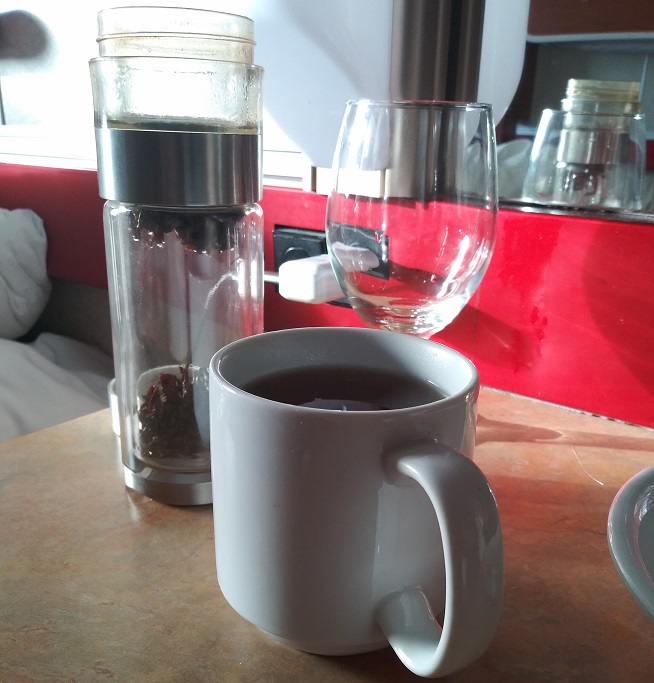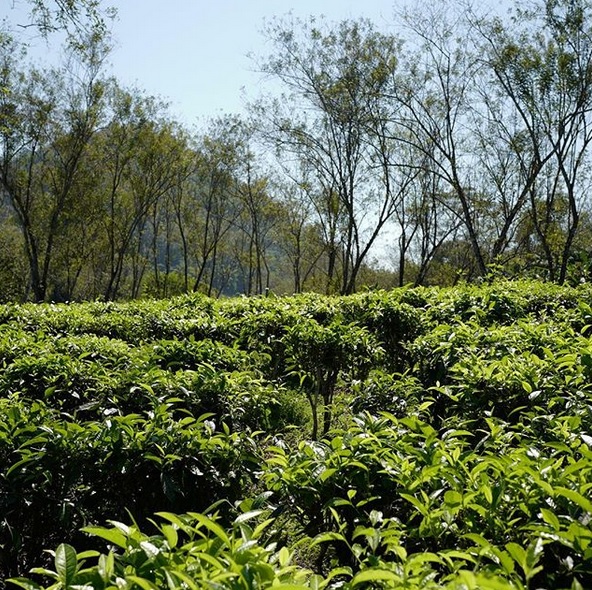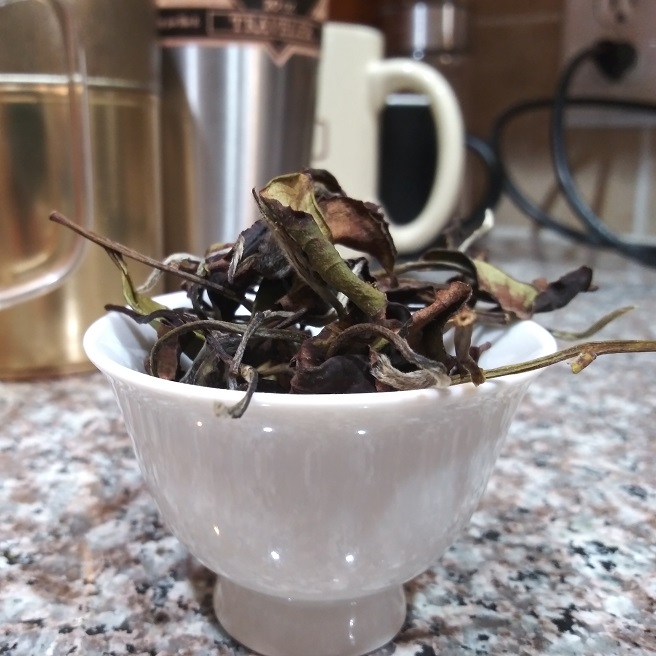I have a good reason for not updating this here blog in awhile, honest. For the last week or so, I was on vacation. As indicated by this dorky tourist capture.

No regrets.
Short summary: I was on a cruise with a gaggle of family members. All part of a makeshift family gathering that reunited my dad with all of his siblings. By “all”, I mean—yes—there are quite a few of them. A few of us in the next generation just happened to be included in the package deal. This particular cruise line and destination route weren’t new to me; I’d done the Ensenada/Catalina run a little over ten years prior. I liked it then, and I liked it now.
What had changed in the intervening years, however, were my tea proclivities. I wasn’t nearly as snobby particular back then, as I am now. That, and prior to the trip, I was relying on California water for my brewing. For the first few days, I got around that in a very simple way.
I drank coffee.

Unlike with tea, coffee still tastes like coffee, no matter the water. And decaf coffee had about a little over a third more caffeine than the average cup of black tea. So, for my morning starters, I swigged the black swill. But that could only go on for so long.
After one day at sea, it became apparent that I couldn’t keep this up forever. As . . . “open” as I was to the darker drink, my palate demanded something far smoother. Luckily, I remembered to pack a tumbler and bag of Giddapahar estate Darjeeling.
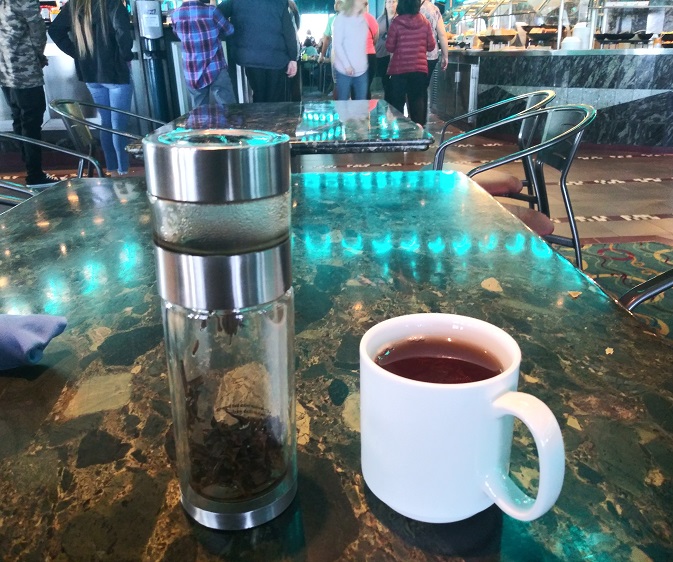
(2017, second flush. Some of you know how significant that vintage is.)
Just a mere whiff of muscatel brought me back to my senses, and the sip was like forbidden divine nectar to a withdrawal-parched tongue. During breakfast buffets aboard the ship, it was easy to arrive with tumbler in tow. But that wasn’t always feasible later on in the day. After all, one of the tenets of touristing is having as little on your person as possible, save for necessities.
Tea wasn’t a necessity. Plus, when you have a bladder the size of an acorn, finding a bathroom immediately after hitting the gong fu sauce—especially in Mexico—was a challenge. Tumbler-brewed, loose leaf tea turned into a morning only thing. For the midday boost, an alternative was needed.
Enter the Arnold Palmer.

Instant iced teas on cruise ships are middling in taste, at best. Sure, you could sweeten it, but that turns into way too much sugar fast. Luckily for me, the buffet area on the boat had their iced tea dispenser right next to the lemonade. Half one, half the other, and I was set.
Although, when wandering the ship, it was really difficult to look sophisticated in the bars with a sippy cup.
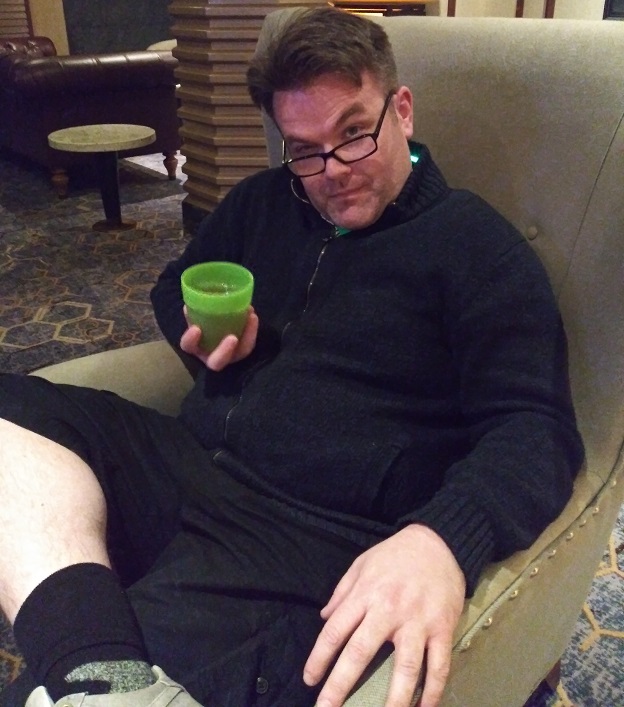
On the third day—our only day without a port of call—one of my aunts pointed out something on the ship itinerary that I’d missed. Apparently, one of the dining areas had an afternoon tea service that day. Up until then, I had no plans for the day at sea; aside from roaming the ship like a drunk seagull. That changed in minutes.
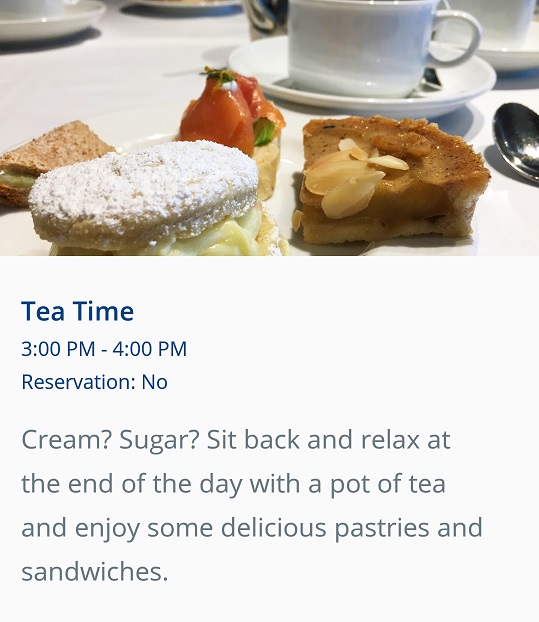
When I mentioned my plans, another aunt and one of my cousins expressed interest in tagging along, which both surprised and delighted me. I had every intention of attending it on my own, but—as we all know—tea is better when shared. The pastries and sandwiches provided by the ship were fantastic; the display, simple but elegant.
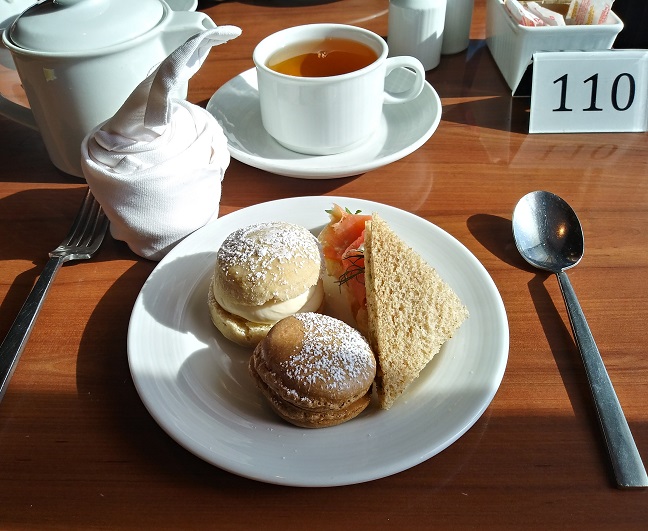
The tea? Um . . . okay, I won’t mention the brand that the ship carried, and I actually respect the company in question. However, the line of teas available ranged from black blends to tisanes, but with a heavier emphasis on the herbals. As I recall, they only had two black teas to choose from, one of which was a cream Earl Grey.
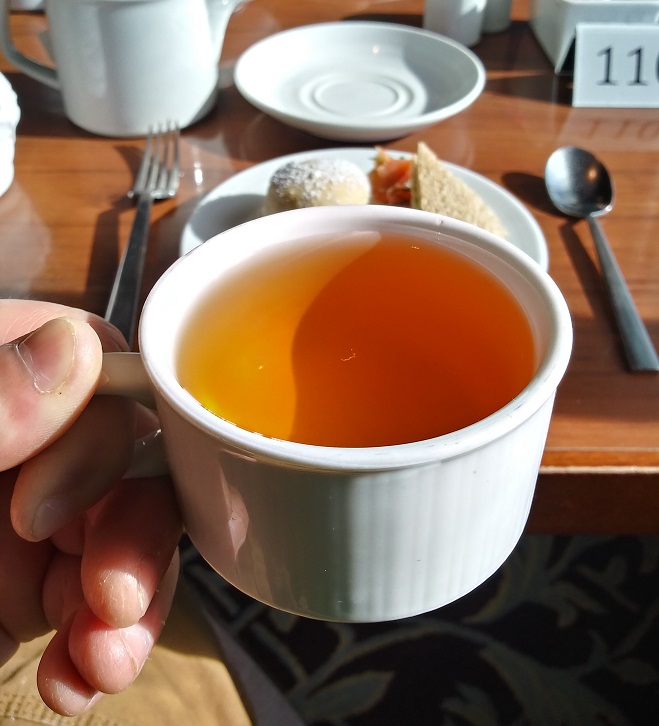
And it tasted like candy-flavored soap.
I’m not sure if it was the ship water; it certainly wasn’t the brewing. I did my own damn brewing! At this stage in my relationship with the leaf, I think I know how I like my Earl Greys. Whatever the reason, the blend did not work. The only way I could make it palatable was loading it with sugar.
That aside, I had a great time. The entire cruise went great. I don’t travel much. In my old-ish age, I’ve come to realize, I only like traveling when I’m being corralled around like a herd animal—cruises included.
I’m not sure if this serves as a definitive “advice” article on how to cruise for tea. If you’re incredibly picky, the safest bet is to bring your own, and adhere to the travails of a travel tea set. I started off by doing that, but it became readily apparent I had to lighten up and loosen up.
Example: on the last morning before debarkation, I hastily double-tea-bagged with breakfast. And didn’t mind it. If you can relax a bit on your usual rules, just go with the flow, you’ll find other ways of making it work. After all, it’s a vacation.
